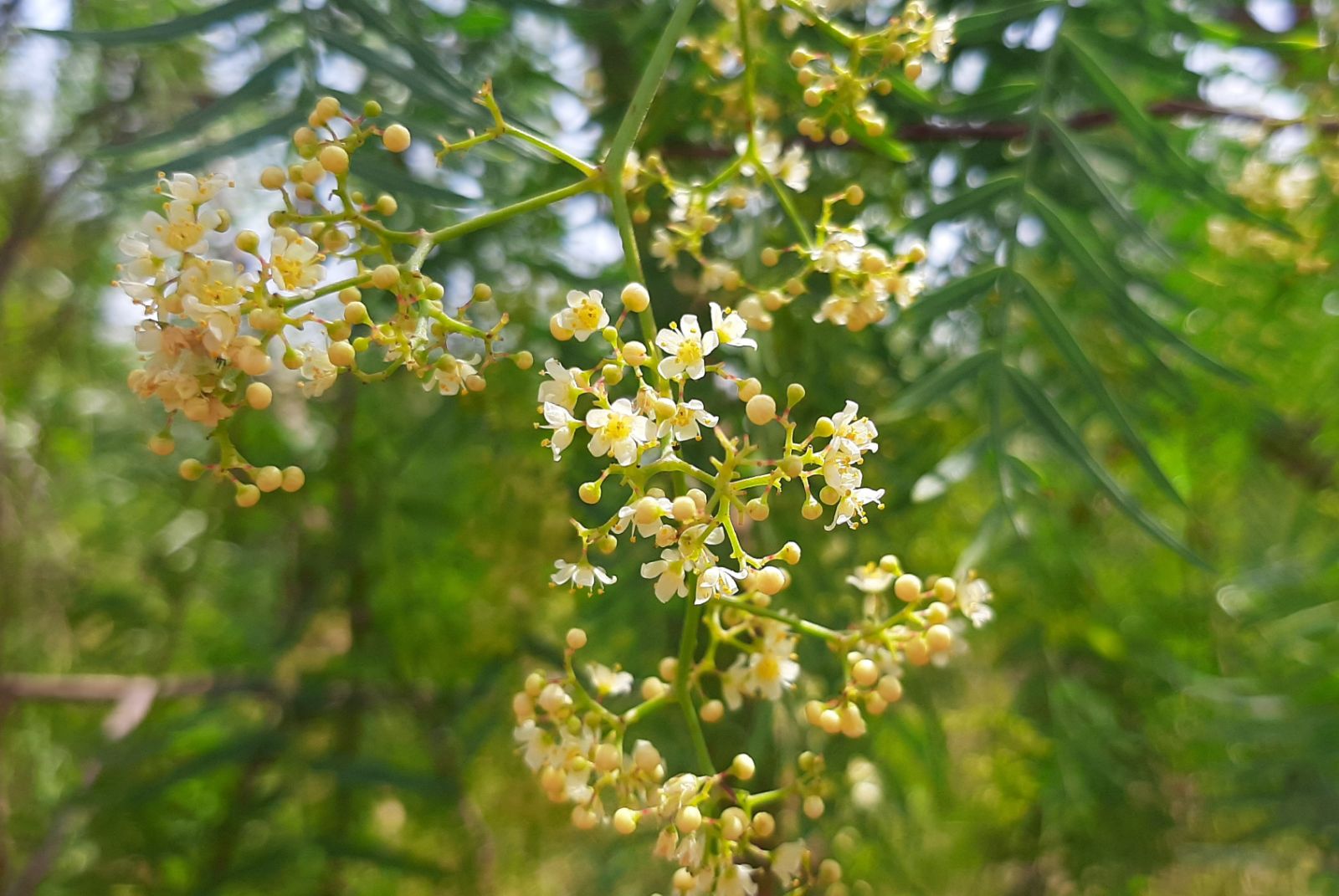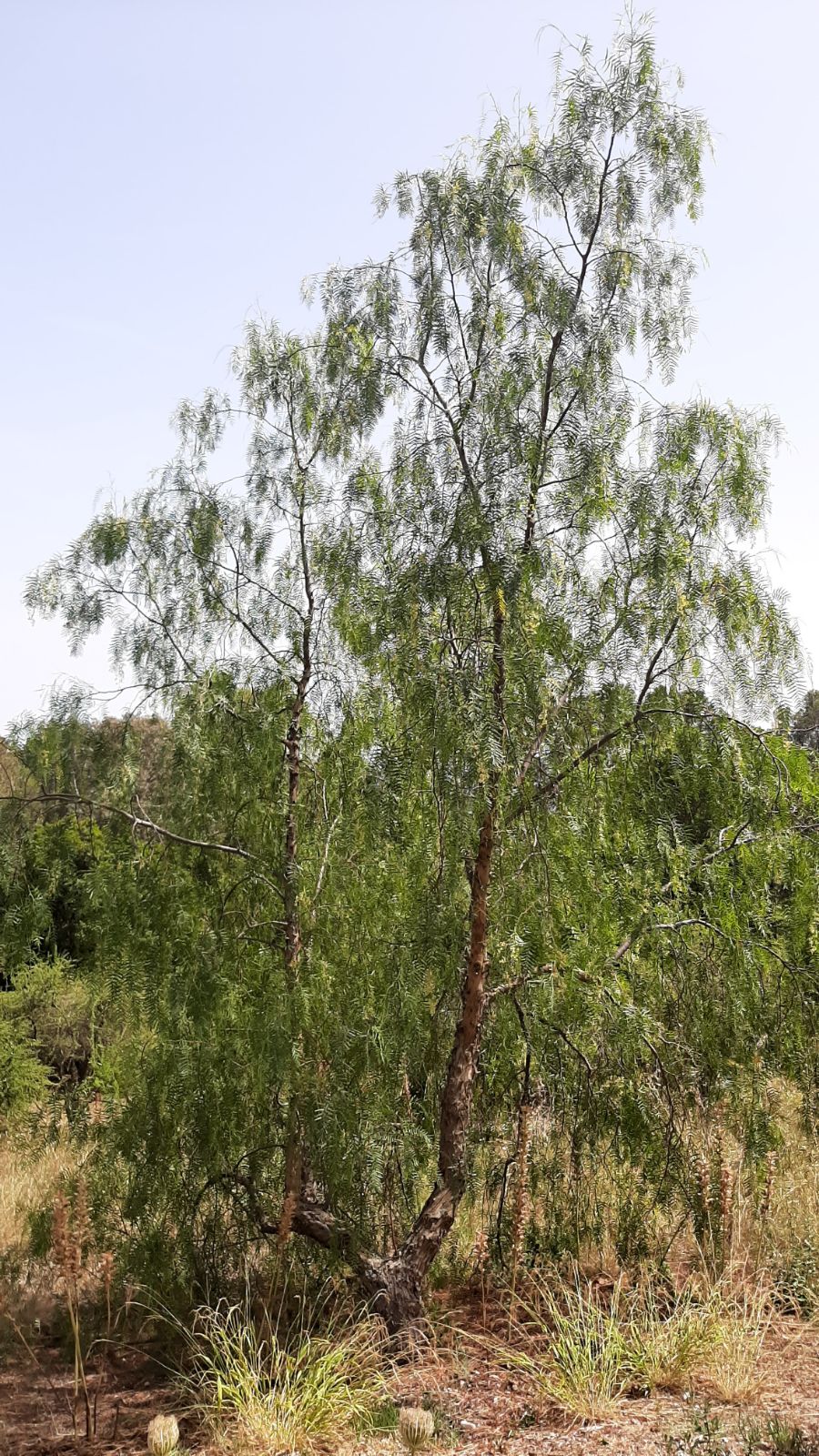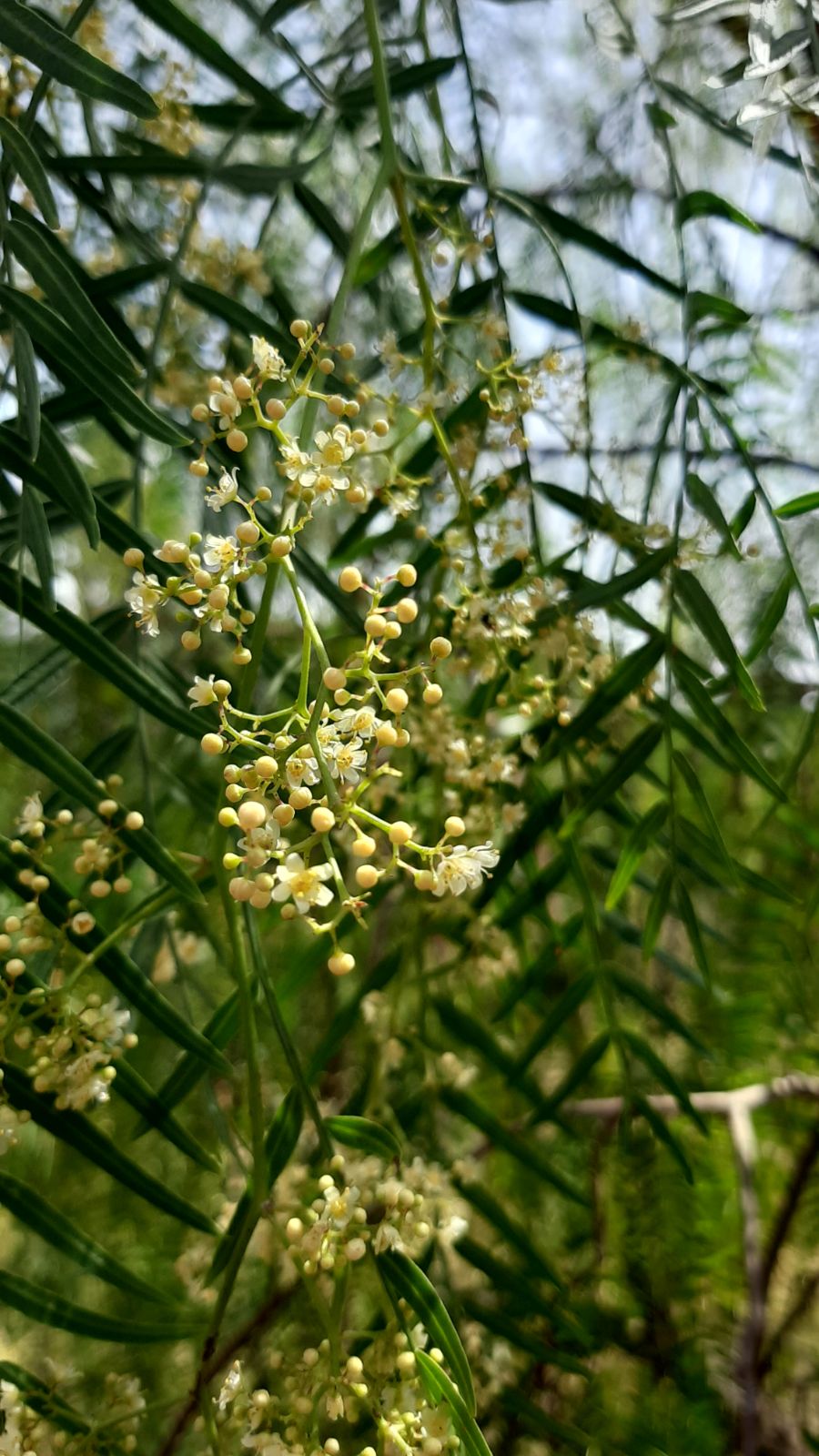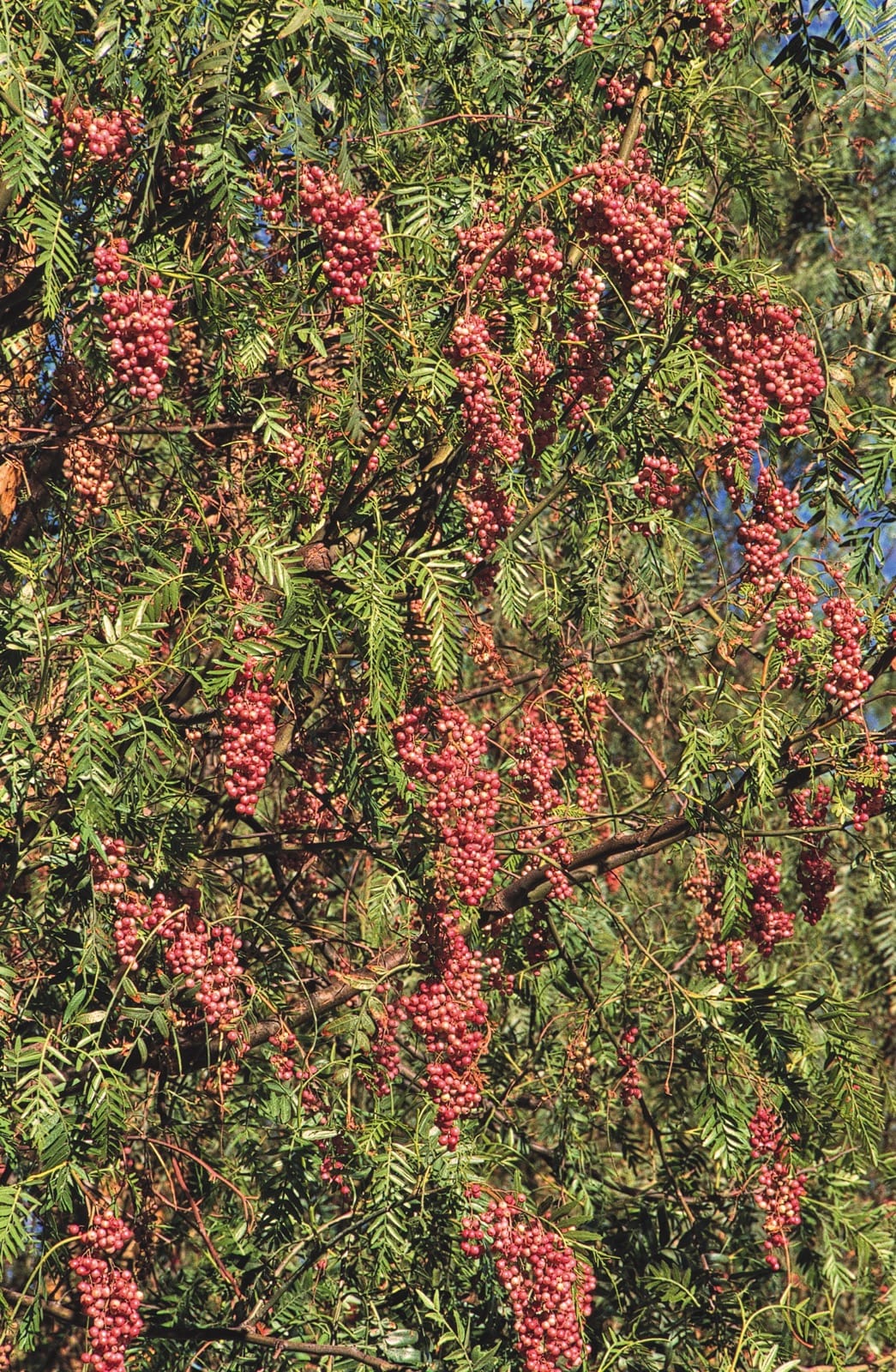Schinus molle
Credits
Article from New Trees by John Grimshaw & Ross Bayton
Recommended citation
'Schinus molle' from the website Trees and Shrubs Online (treesandshrubsonline.
Genus
Common Names
- (Peruvian/Brazilian
- etc.) Pepper-tree
- Mulli
Tree to 20 m, trunk often short and stout; crown broad and much branched. Branches pendulous, slender, brown and glabrous at maturity; exuding white or clear latex when cut. Bark greyish brown, scaly and cracked, very rough. Leaves evergreen, imparipinnate, pale to dark green, 10–30 cm long; leaflets 19–41, sessile, linear-lanceolate, 0.8–6 × 0.4–0.8 cm, somewhat membranous, margins entire to coarsely serrate, apex acute and slightly curved; petiole distinct, 2–3 cm long; rachis slightly winged. Dioecious. Inflorescence a lateral panicle or a terminal thyrse, 8–15 cm long and typically longer than the leaves. Flowers inconspicuous. Fruit a drupe, 0.5–0.7 cm diameter, skin shiny and brittle, lavender to pink. Barkley 1944. Distribution ARGENTINA; BOLIVIA ; BRAZIL; CHILE; COLOMBIA; ECUADOR; MEXICO; PARAGUAY; PERU; URUGUAY; VENEZUELA. The natural range of S. molle is somewhat difficult to determine as it is widely planted in subtropical regions around the world. Habitat Mixed savannas and bushveld, typically near permanent water sources. USDA Hardiness Zone 9–10. Conservation status Not evaluated. Illustration NT786. Cross-reference K311. Taxonomic note Schinus molle var. areira (L.) DC. (= S. areira L.) is distinguished by Barkley (1957) on the basis of minor leaf variation, and is said to be distributed from Mexico to Chile while the type variety is restricted to central South America. It does not seem helpful, however, to separate a variety based on characters that vary across the species. Another variety, from Peru – var. rusbyi Barkley – is a small tree of only 3 m, with inflorescences somewhat shorter than the leaves and the terminal leaflet absent. This may be worthy of specific rank. The epithet molle is a corruption of the Native American name mulli, and does not indicate softness.
Schinus molle, the Pepper-tree, is a familiar sight in dry, hot parts of the world, whether fringing a golf course in Palm Desert or sheltering a dusty school in the African bush, its long drooping shoots and stubby trunk giving it a very distinctive appearance, while its aromatic foliage and lovely fruits are memorable. It is the sort of tree one can become nostalgic about. For most gardeners in our area, however, it is a tree to be enjoyed in memory only, requiring heat to grow well and harden its shoots, in which case it can tolerate a few degrees of frost. In California it grows through the Central Valley and along the coast, but is subject to damage in the event of a frost – even large old trees being cut to the base in severe conditions. It is grown along the Oregon coast also but has not been successful in Portland, where it fails to ripen its wood, and resprouts from the base each year (S. Hogan, pers. comm. 2008). No doubt other similar outposts can be found away from its strongholds in Mediterranean Europe, but in northern Europe it is really only suited for use as a patio tub tree, despite occasional optimistic assessments that it is merely a ‘little tender’ (Taylor 1990). In his survey of half-hardy trees in Britain and Ireland, carried out during 2006, Owen Johnson (2007) found only one very weak specimen, in Peckham, south London – in ‘as hot and frost-free a garden as any’. In our area its potential weediness is not an issue, but this is a concern in more favourable climates. It is also potentially allergenic, and the fruits – now a regular component in fancy pepper mills – can be mildly toxic. Many medical benefits, however, are claimed for the tree and its essential oils (Taylor 2005).




